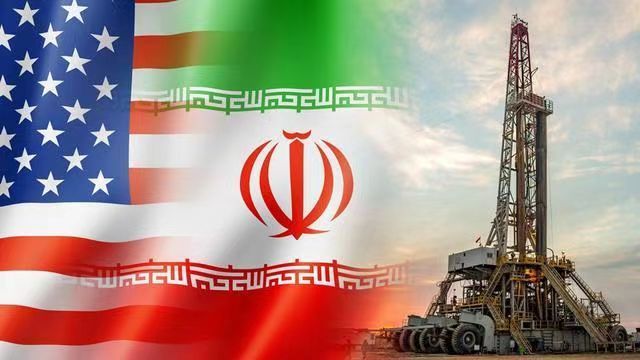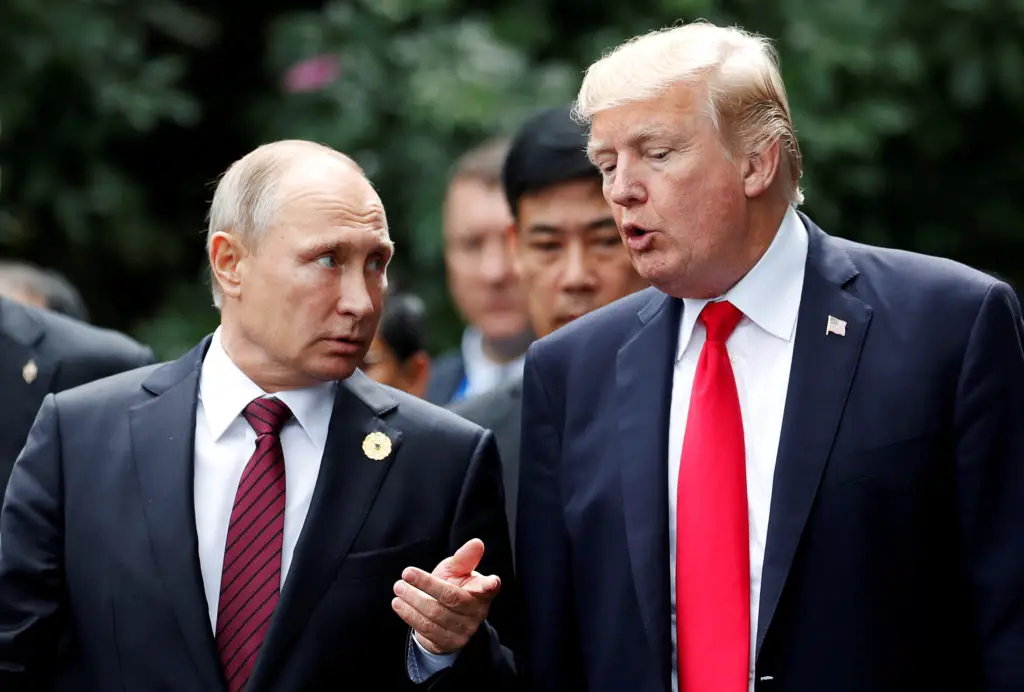“Trump’s Hardline Stance on Iran Fuels Escalating War Fears”
Trump’s Foreign Policy Legacy: How Iran Confrontation Shapes His Geopolitical Strategy
The question of whether Donald Trump sought war with Iran during his presidency remains a subject of intense debate, emblematic of the broader contours of his foreign policy. Trump’s approach to Iran marked a sharp departure from the diplomatic engagement pursued by previous administrations, instead emphasizing confrontation through economic sanctions, strategic isolation, and unprecedented military provocations. This strategy, often framed as “maximum pressure,” sought to force Tehran into renegotiating the 2015 Joint Comprehensive Plan of Action (JCPOA), which Trump derided as “the worst deal ever.” Yet, while his administration’s tactics heightened tensions to historic levels, they also revealed a calculated—if risky—effort to reshape U.S. geopolitical leverage without triggering full-scale conflict.
Central to Trump’s Iran policy was the unilateral withdrawal from the JCPOA in 2018, accompanied by the reinstatement of stringent sanctions targeting Iran’s oil exports, financial systems, and key political figures. The objective, as articulated by officials, was to cripple Iran’s economy and compel concessions on its nuclear program and regional activities. However, rather than capitulating, Iran responded by gradually exceeding the nuclear deal’s limits, accelerating uranium enrichment and reducing international monitoring—a trajectory that heightened proliferation risks. This escalation underscored the double-edged nature of “maximum pressure”: while imposing severe economic hardship, it also eroded the very constraints the policy aimed to preserve.
The apex of confrontation came in January 2020 with the U.S. drone strike that killed Qassem Soleimani, Iran’s top military commander. The operation, framed by Trump as a necessary deterrent against “imminent threats,” ignited global alarm over potential war. Iran retaliated with missile strikes on Iraqi bases housing U.S. troops, yet both sides subsequently de-escalated, avoiding a broader military clash. Critics argued that the assassination recklessly endangered regional stability, while supporters contended it demonstrated resolve against Iranian aggression. Either way, the episode exemplified Trump’s preference for coercive tactics over diplomatic engagement, testing the boundaries of conflict without crossing into open war.
Beyond direct confrontations, Trump’s Iran strategy was intertwined with a broader realignment of Middle East alliances. The 2020 Abraham Accords, normalizing relations between Israel and several Arab states, were touted as a diplomatic triumph, but they also served to isolate Iran by uniting regional adversaries against its influence. This dual
The Escalation Of US-Iran Tensions Under Trump: Sanctions, Soleimani Strike, And The Path To War
The question of whether former U.S. President Donald Trump sought war with Iran remains a subject of intense debate, rooted in the dramatic escalation of tensions during his administration. Trump’s approach to Iran marked a stark departure from his predecessor’s policies, beginning with the unilateral withdrawal from the Joint Comprehensive Plan of Action (JCPOA) in May 2018. This decision, justified by Trump as a response to the agreement’s perceived shortcomings, set the stage for a “maximum pressure” campaign aimed at curtailing Iran’s nuclear ambitions and regional influence. The reinstatement of sweeping sanctions targeting Iran’s oil exports, financial sector, and key institutions plunged the country into economic crisis, with inflation soaring and access to global markets narrowing. Yet, rather than compelling concessions, the sanctions appeared to galvanize Tehran’s resolve, prompting retaliatory measures such as the resumption of nuclear activities beyond JCPOA limits and increased support for proxy groups across the Middle East.
The economic stranglehold failed to curb Iran’s regional activities, heightening friction. By 2019, attacks on oil tankers in the Gulf, drone shootdowns, and assaults on Saudi oil facilities—all attributed to Iranian proxies—raised alarms. The Trump administration responded by designating Iran’s Islamic Revolutionary Guard Corps (IRGC) as a terrorist organization, further entrenching hostilities. Tensions reached a boiling point in January 2020 with the U.S. drone strike that killed Qasem Soleimani, Iran’s top general and architec t of its regional proxy networks. The operation, framed by Trump as a preemptive measure against “imminent attacks,” stunned global observers and drew widespread condemnation. Critics argued the move, undertaken without congressional approval, risked uncontrollable escalation, while supporters hailed it as a decisive blow against a malign actor.
Iran’s response was swift but measured. Days later, it launched missile strikes on Iraqi bases housing U.S. troops, resulting in injuries but no fatalities—a calibrated retaliation suggesting a desire to avoid all-out war. Trump, in turn, imposed additional sanctions, signaling resolve without further military action. This cycle of provocation and restraint underscored a precarious balance: While both sides appeared to edge toward conflict, they simultaneously stepped back from the brink. Analysts remain divided on Trump’s intentions. Some interpret the maximum pressure campaign and the Soleimani strike as coercive tactics to force negotiations, aligned with Trump’s preference for “winning” through economic leverage rather than open warfare. Others contend such aggressive posturing, compounded by adversarial advisers like John Bolton, risked miscalculation, with the Soleim
Analyzing Trump’s Aggressive Rhetoric Toward Iran: Strategic Posturing Or Prelude To Conflict?
In recent years, former President Donald Trump’s confrontational approach toward Iran has sparked intense debate over whether his aggressive rhetoric signals a deliberate march toward military conflict or a calculated strategy to extract concessions. From withdrawing the U.S. from the landmark 2015 Joint Comprehensive Plan of Action (JCPOA) to authorizing the targeted killing of Iranian General Qasem Soleimani in 2020, Trump’s actions have consistently heightened tensions with Tehran. As speculation persists about his potential return to office, questions arise: Is Trump’s bellicose posture mere strategic posturing, or does it risk provoking a war that could destabilize the Middle East?
Trump’s Iran policy has long been defined by a “maximum pressure” campaign, marked by stringent economic sanctions, diplomatic isolation, and military brinkmanship. The 2018 withdrawal from the JCPOA, which he criticized as “defective at its core,” severed dialogue channels and prompted Iran to gradually abandon limits on uranium enrichment, advancing its nuclear program to near-weapons-grade levels. The escalation reached a peak in early 2020 with the drone strike that killed Soleimani, a pivotal figure in Iran’s regional military strategy. While the administration framed these moves as efforts to curb Iranian aggression and force renegotiation of the nuclear deal, critics warned that such tactics risked tilting the region toward open conflict.
Proponents of the strategic posturing argument contend that Trump’s approach mirrors historical uses of coercive diplomacy, where aggressive rhetoric and symbolic acts of force are deployed to signal resolve rather than intent for war. They point to his reluctance to engage in prolonged military entanglements, as evidenced by his criticism of U.S. involvement in Iraq and Afghanistan, as proof that his endgame is negotiation, not confrontation. This perspective draws parallels to past administrations that leveraged military threats to achieve diplomatic ends, such as Reagan’s pressure on the Soviet Union. Additionally, Trump’s inconsistent messaging—oscillating between threats and offers of dialogue—could be interpreted as a deliberate tactic to keep adversaries off-balance, a strategy some analysts describe as “calculated unpredictability.”
Conversely, skeptics argue that sustained escalatory actions, compounded by Iran’s retaliatory measures, create a tinderbox scenario where miscalculations could spiral into broader conflict. Since 2019, incidents such as attacks on oil tankers, U.S. base strikes by Iranian proxies, and Tehran’s accelerated nuclear advances underscore the volatility of the status quo. Regional dynamics further complicate the picture: Iran’s deepening alliances with Russia and China, coupled with its support for militant groups across the Middle East, could incentivize harder U.S. responses. Moreover, experts caution that abandoning diplomacy in favor of pressure tactics may embolden hardliners in Tehran, narrowing avenues for de-escalation.
The debate remains unresolved, with analysts divided on whether Trump’s rhetoric reflects a coherent strategy or an ad-hoc approach laden with risks. Some emphasize that his administration avoided large


